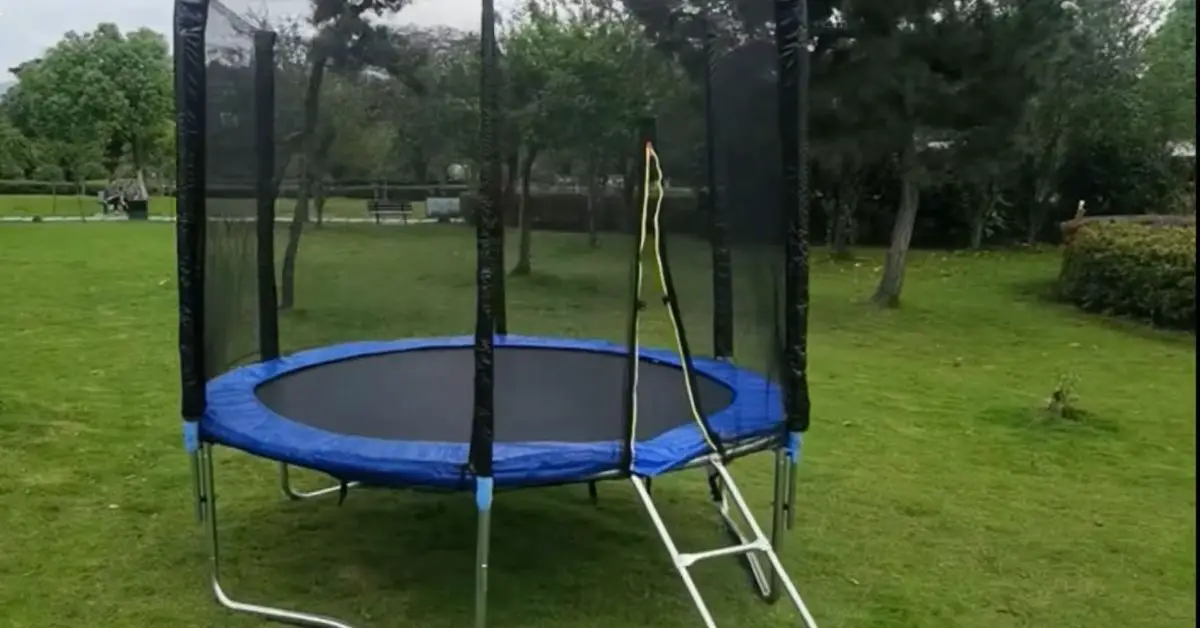Trampolines are a fun and exciting way to exercise and enjoy outdoor activities with family and friends. However, choosing the right trampoline size can be daunting, especially for first-time buyers.
The size of a trampoline can vary greatly depending on factors such as age range, number of users, available space, and intended use. Choosing the wrong size can lead to safety concerns and a less enjoyable experience.
Therefore, it is essential to understand the different trampoline sizes available and which is best suited for your needs. This article will discuss the key factors to consider when selecting a trampoline size and the advantages and disadvantages of different shapes and weight limits.
With this information, you can choose the perfect trampoline for your family.
What size trampoline is best
Choosing the right size trampoline can be a challenging decision. Factors such as age range, available space, and intended use all play a role in determining the best size. Considering these factors, you can make an informed decision and find the perfect trampoline for your needs.
How to Choose the Right Trampoline Size
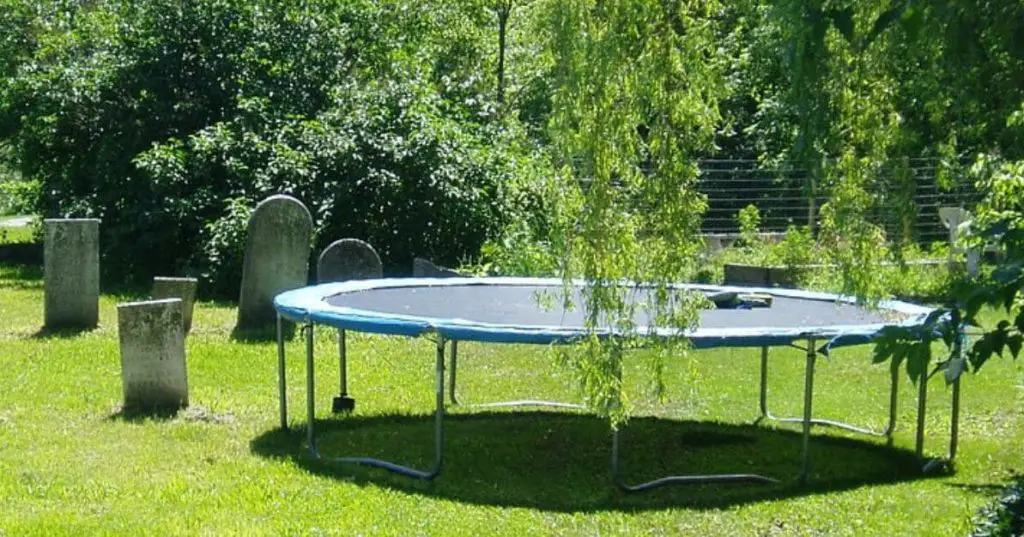
Trampolines are a great way to have fun, get exercise, and spend time outdoors. However, choosing the right trampoline size can be a daunting task. With so many different sizes and shapes, it’s easy to feel overwhelmed.
We’ll explain how trampolines are measured, why size matters, and the four main factors to consider when selecting a trampoline size.
How Trampolines are Measured
Trampolines are measured by their diameter, which is the distance across the center of the trampoline. Most trampolines are round, but some are rectangular. Round trampolines are measured by their diameter, while rectangular trampolines are measured by their length and width.
Why Size Matters
The size of your trampoline will affect how many people can use it at once, how much space it takes up, and how safe it is to use. A trampoline that is too small for your needs can be frustrating and dangerous, while a trampoline that is too big can be expensive and take up too much space in your yard.
Factors to Consider When Selecting a Trampoline Size
When selecting a trampoline size, there are several factors to consider:
Age Range
The age of the users is one of the most important factors to consider when selecting a trampoline size. Trampolines come in different sizes to accommodate different age groups. A smaller trampoline with a lower weight capacity is appropriate for younger children. For older children and adults, a larger trampoline with a higher weight capacity is necessary.
Number of Users
Consider how many people will be using the trampoline at once. If you have a large family or like to invite friends, you’ll need a larger trampoline to accommodate multiple users. A too-small trampoline for your needs can be frustrating and dangerous.
Available Space
Measure the area where you plan to put the trampoline. Ensure enough space for the trampoline and for users to jump safely. Considering the clearance above the trampoline is also important, as users will need room to jump without hitting overhead obstacles.
Intended Use
Consider how you plan to use the trampoline. Will it be used for exercise, recreation, or both? A trampoline used for exercise may need to be larger than one used for recreation, as users will need more room to perform certain exercises.
Practical Advice for Choosing the Right Trampoline Size
To choose the right trampoline size, start by measuring the area where you plan to put the trampoline. Take into account any obstacles or clearance requirements. Next, consider the age range of the users and the number of people who will be using the trampoline at once.
Finally, think about the intended use of the trampoline and whether it will be used for exercise, recreation, or both.
Once you have determined the appropriate size for your needs, research different models and brands to find the best fit. Look for trampolines with high-weight capacities and safety features such as padding and netting.
Trampoline Sizes and Shapes
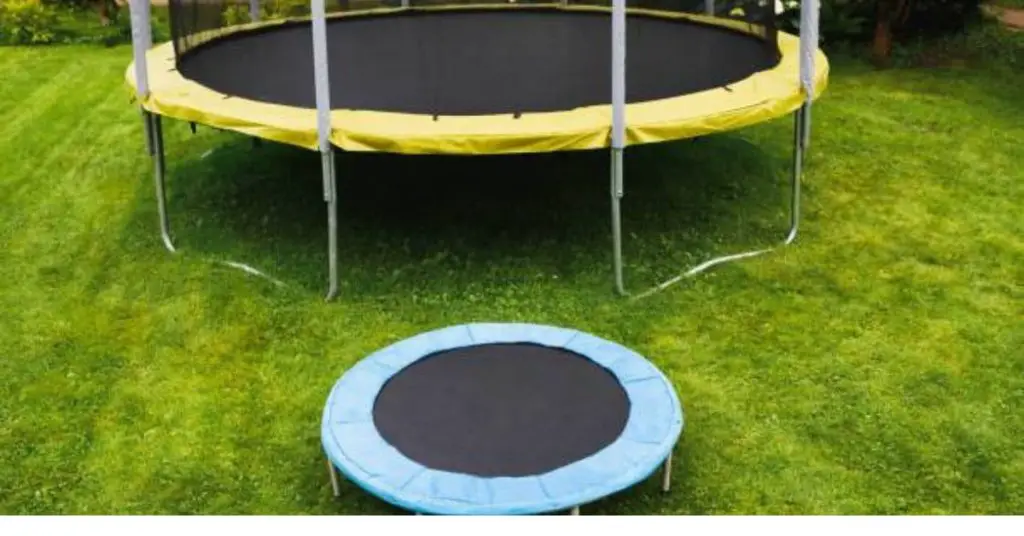
Trampolines have been popular backyard features for decades, providing endless entertainment for kids and adults alike. But with so many different sizes and shapes available, choosing the right one for your needs can be challenging.
we will explore the most common trampoline sizes and shapes, their typical uses, and the differences between round and rectangular trampolines. We’ll also look at the advantages and disadvantages of springless and spring trampolines.
Trampoline Sizes
Trampolines come in various sizes, from small indoor models to giant outdoor structures. The most common sizes for outdoor trampolines are:
8-10 ft: These are the smallest outdoor trampolines available and are generally suitable for young children. They are also a good option if you have limited outdoor space.
12 ft: This is the most popular size for outdoor trampolines, suitable for children and adults alike. It provides a good balance between size and practicality.
14-15 ft: These larger trampolines are suitable for families or households with multiple users. They also offer more jumping space, ideal for gymnastics or other advanced tricks.
16+ ft: These are the largest trampolines available and are suitable for large families or groups of friends. They provide plenty of space for multiple users to jump simultaneously.
Trampoline Shapes
The two most common trampoline shapes are round and rectangular. Round trampolines are the most popular, with most outdoor models being round. Round trampolines are generally suitable and are typically less expensive than rectangular models.
Rectangular trampolines, on the other hand, are generally more expensive than round models but offer several advantages. Rectangular trampolines provide a larger jumping area, making them ideal for gymnastics and other advanced tricks.
They also have a more even bounce across the entire surface, whereas round trampolines have a softer bounce toward the center.
Advantages and Disadvantages of Springless and Spring Trampolines
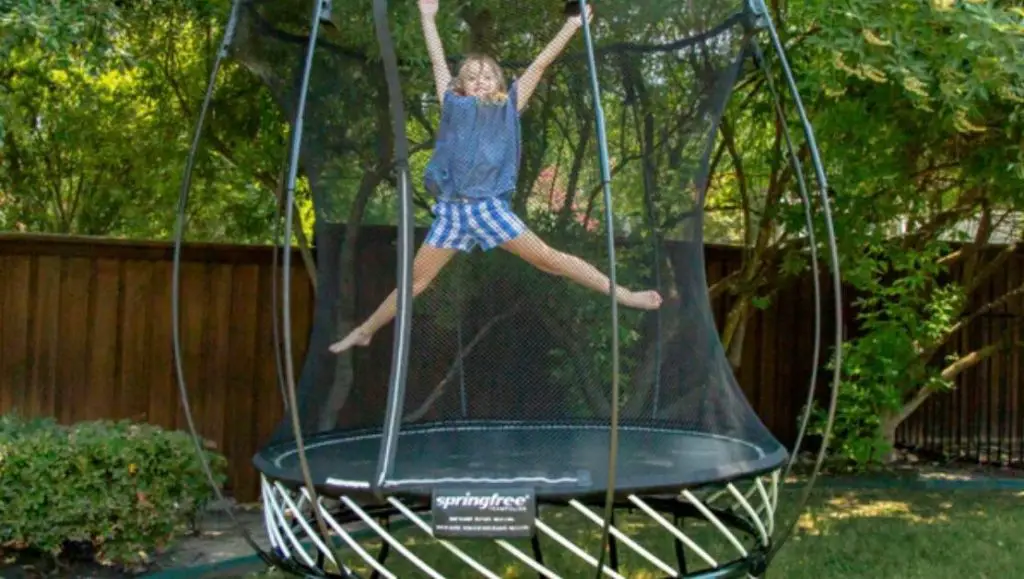
When it comes to trampolines, you can choose between springless and spring models. Springless trampolines are relatively new to the market and offer several advantages over traditional spring models.
One of the main advantages of springless trampolines is that they are safer. Traditional trampolines use springs to provide the bounce, but these can be dangerous if not properly maintained. Springs can break or come loose, causing injuries to users. On the other hand, springless trampolines use flexible composite rods to provide the bounce, eliminating the risk of injury from broken springs.
Another advantage of springless trampolines is that they provide a more even bounce across the entire surface. Traditional trampolines have a softer bounce towards the center, frustrating users trying to perform advanced tricks.
The main disadvantage of springless trampolines is that they are typically more expensive than traditional spring models. They are also more challenging to set up, as the flexible rods must be inserted into the mat before use.
Trampoline Weight Limits and Safety Considerations
Trampolines can be a great source of entertainment and exercise for people of all ages, but it’s important to remember that they also pose certain risks. To ensure a safe and enjoyable experience, paying attention to weight limits and other safety considerations is crucial.
Weight Limits: Why Are They Important?
Every trampoline has a weight limit specifying the maximum weight it can safely support. Exceeding this limit can cause the trampoline to become unstable and increase the risk of injury.
Determining the Appropriate Weight Capacity
When choosing a trampoline, selecting one with a weight capacity that can accommodate the intended users is important. The weight capacity is typically indicated in the product specifications or user manual.
To determine the appropriate weight capacity, start by adding up the weight of all potential users. This includes their body weight and any clothing or accessories they may be wearing. It’s important to factor in all users’ minimum and maximum weight and any weight gain that may occur over time.
Once you have this total weight, choose a trampoline with a weight capacity that exceeds this amount. It’s always better to err on caution and select a trampoline with a higher weight capacity than you think you’ll need.
Other Safety Considerations
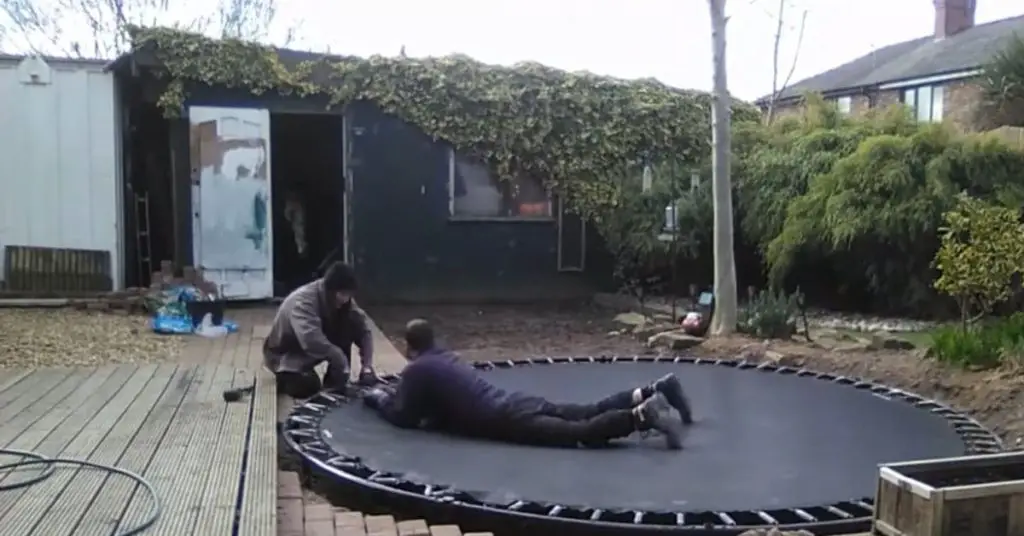
In addition to weight limits, there are other safety considerations to keep in mind when using a trampoline:
Padding: Trampolines should have safety padding covering the springs, frame, and other hard surfaces. This can help to prevent injuries from falls or collisions with the trampoline’s components.
Netting: Enclosing the trampoline with netting can help to prevent falls and keep users from bouncing off the trampoline. Netting should be properly installed and securely attached to the trampoline.
Anchoring: Trampolines should be anchored securely to the ground to prevent tipping over or becoming unstable during use. This is especially important in areas with high winds or other inclement weather.
Tips for Safe and Responsible Use
Even with appropriate weight limits and safety features, using a trampoline safely and responsibly is still important. Here are some tips to keep in mind:
Supervision: Children should always be supervised when using a trampoline, and adults should never use a trampoline alone. Make sure that someone is present to monitor activity and intervene if necessary.
One at a Time: Only one person should be on the trampoline at a time. Multiple users increase the risk of collisions and fall.
No Flips: Avoid performing flips or other dangerous maneuvers on the trampoline. These can lead to serious injuries, especially if multiple users are on the trampoline at the same time.
Proper Attire: Users should wear appropriate clothing and footwear when using a trampoline. Loose clothing or jewelry can become entangled in the trampoline’s components, and bare feet can increase the risk of slipping.
Regular Inspections: Inspect the trampoline regularly for signs of wear and tear and immediately replace any damaged or worn parts.
By following these guidelines and being mindful of weight limits and other safety considerations, you can help to ensure a safe and enjoyable experience on your trampoline.
What size trampoline is best: Trampoline Size Guide by Age Group
Here’s a breakdown of trampoline sizes suitable for different age groups:
Trampoline sizes suitable for younger age groups (toddlers and young children):
- 8-10 foot round trampolines are ideal for younger children
- They are small enough to be safe for toddlers but also large enough for young children to enjoy
- They typically have a weight capacity of around 150 lbs. and can accommodate 1-2 children at a time
Trampoline sizes suitable for pre-teens and teenagers:
- 12-14 foot round trampolines are suitable for pre-teens and teenagers
- They provide ample space for jumping, flipping, and other activities.
- They typically have a weight capacity of around 200-250 lbs. and can accommodate 2-3 children at a time
Trampoline sizes suitable for adults:
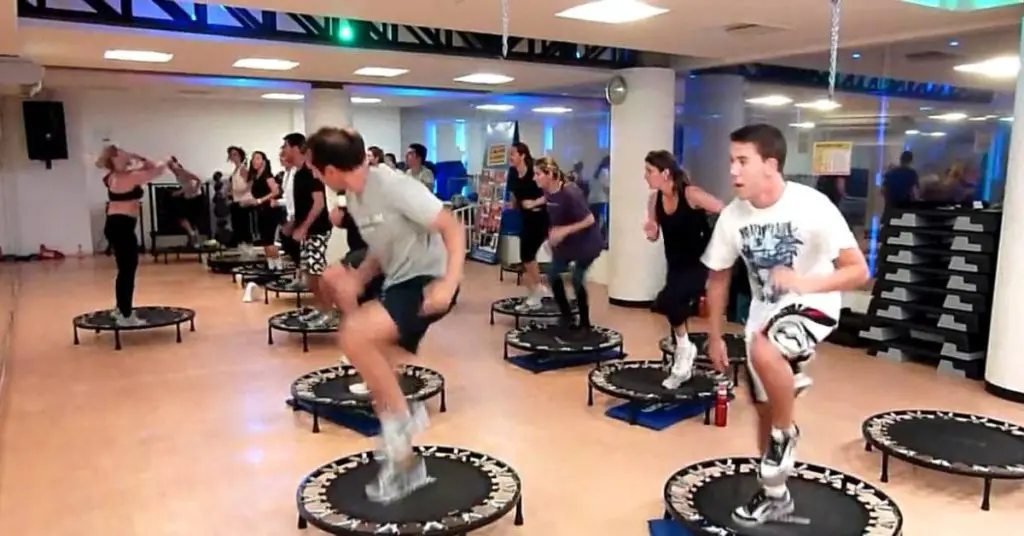
- 14-16 foot round trampolines are suitable for adults
- They provide plenty of space for jumping, flipping, and other activities.
- They typically have a weight capacity of around 250-300 lbs. and can accommodate 2-4 people at a time.
It’s important to note that these are just general guidelines, and the best trampoline size for a particular age group will depend on the individual’s height, weight and skill level. It’s always best to check the manufacturer’s recommendations for weight and age limits before making a purchase.
FAQs
Q.1 What size trampoline should I get for my backyard?
The size of the trampoline you should get depends on the available space in your backyard, the number of users, and their age range. For a family of four with young children, a 12ft trampoline is the most popular size, while a larger 14ft or 15ft trampoline may be better suited for older children or adults.
Q.2 What shape of trampoline is best?
Round trampolines are generally safer and more suitable for younger children due to the even distribution of the bounce. However, rectangular trampolines offer a more powerful bounce, ideal for gymnasts and more experienced users.
Q.3 What is the weight limit for trampolines?
The weight limit for trampolines varies by size and brand, but most can safely support up to 300 lbs. It is important always to check the manufacturer’s recommendations and never exceed the weight limit.
Q.4 How can I ensure the safety of my trampoline?
Invest in safety features such as padding, netting, and anchoring to ensure your trampoline’s safety. Always supervise young children using the trampoline and enforce safety rules such as no somersaults or roughhousing.
Q.5 Can I use a trampoline indoors?
While it is possible to use a trampoline indoors, it is not recommended due to the potential for damage to floors, walls, and ceilings. Additionally, the height requirements for safe trampoline use cannot always be met indoors. It is recommended to use trampolines outdoors in a safe, open space.
Conclusion
In conclusion, choosing the right trampoline size is an important decision that requires careful consideration of several factors. These factors include the age range of users, the number of users, the available space, and the intended use of the trampoline. Choosing a trampoline size that provides enough room for safe and comfortable jumping is crucial.
Trampolines are measured based on the diameter of the jumping surface, and the size of the frame can affect the size of the jumping surface. Size matters because larger trampolines can provide more room for multiple users and advanced maneuvers. However, larger trampolines may require more space and have higher weight capacity requirements.
When selecting a trampoline size, it is important to consider the advantages and disadvantages of springless and spring trampolines. Springless trampolines are safer and quieter but may have less bounce, while spring trampolines are more traditional and have more bounce but may require more maintenance.
Weight limits and other safety considerations are also essential when choosing the right trampoline size. It is important to determine the appropriate weight capacity and follow tips for safe and responsible use to ensure a fun and safe jumping experience.
Ultimately, choosing the right trampoline size involves considering a range of factors, including age range, number of users, available space, and intended use. Use this comprehensive guide to help you choose the right trampoline size and shape for your needs and preferences.
After reading this complete guide on what size trampoline is best, we hope you understand how to choose the right size for your needs. If you have any questions, please feel free to comment below!

